Over the years I’ve been amazed about the loosey goosey approach many attorneys have towards the QME process.
Not sending medical records to the QME at all, sending too many medical records, sending medical records at the last minute, sending undisclosed sub rosa films, sending no cover letter with questions to be addressed, sending massive cover letters, sending records and documents that were not served on the opposing party……I’ve seen it all.
Disputes about when and what is sent to the QME appear to have been rising. Likewise, there appear to be more disputes about the need for replacement panels.
That’s why the new WCAB en banc decision on the QME process is to be welcomed. The October 2018 en banc decision in Sandab Suon v. California Dairies can be found at the end of this post.
Unfortunately both applicant attorneys, defense attorneys and claims examiners are to blame for some of the problems that arise in the QME process.
Sometimes there is a straightforward issue as to whether a prohibited ex parte communication has occurred. In Suon, there was an unresolved issue as to whether the applicant attorney was served with a letter transmitting medical documents to the QME.
More frequently, in my experience, are disputes about what materials (that’s my term; the code uses the terms “information” and “communication”) can be or were sent to the QME.
All too frequently medical records and non-medical documents (including sub rosa films) are sent by one party to the QME at the last minute, so that there often is essentially a small or nonexistent window of time for the opposing party to object.
In Suon, the panel notes that it appears undisputed that defendant did not serve applicant counsel with a medical report 20 days before the report was provided to the QME.
Sometimes these scenarios may be due to gamesmanship. Other times it is simply reflective of the fact that many of the attorneys in the comp community are overworked and struggling to get everything together to get it to the QME in a timely fashion.
Sometimes this noncompliance with the rules is “no harm, no foul”. But in some cases the stakes may be high and noncompliance with rules can result in a party being “sandbagged”.
In its Muon en banc the WCAB sets up a workable framework for resolving disputes over “information” and “communication” in the QME process.
This framework includes emphasis on the Labor Code 4062.3(b) mandate that information be served on the opposing party 20 days before it is provided to the QME.
The WCAB holds that while the parties should make a good faith effort to resolve issues about what is to be provided to the QME, the trier of fact has the authority to resolve such issues. Moreover, the WCJ is noted to have “wide discretion to determine the appropriate remedy for a violation of section 4062.3(b).”
Furthermore, the Muon panel identifies at least (but not limited to) six relevant factors that the trial judge may look at in fashioning an appropriate remedy for violation of 4062.3(b). Those factors are as follows:
1. The prejudicial impact versus the probative weight of the information.
2. The reasonableness, authenticity and, as appropriate, relevance of the information to determination of the medical issues.
3. The timeline of events including: evidence of proper service of the information on the opposing party, attempts, if any, by the offending party to cure the violation, any disputes regarding receipt by the opposing party and when the opposing party objected to the violation.
4. Case specific factual reasons that justify replacing or keeping the current QME, including the length of time the QME has been on the case.
5. Whether there were good faith efforts by the parties to agree on the information to be provided to the QME.
6. The constitutional mandate to “accomplish substantial justice in all cases expeditiously, inexpensively, and without incumbrance of any character.” (Cal. Const., art. XIV, § 4.)
Parties who are unhappy with the determination of the WCJ will be able to seek removal to the WCAB. However, it would seem that in light of the wide discretion referenced by the Muon panel, removal attempts are not likely to often succeed.
Here is the Muon decision:
WorkersCompExParte(SuonV.CaliforniaDairies)
Stay tuned.
Julius Young



